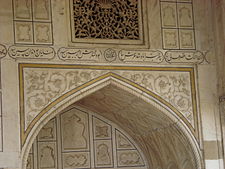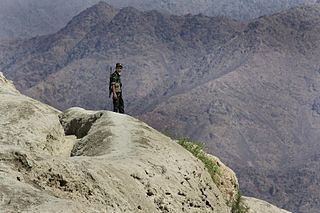The following is a list of sovereign states that have Persian as an official language.
Contents
- Official language
- Significant minority language
- Historical language
- Indian subcontinent
- Ottoman Empire
- See also
- References

Legend
The following is a list of sovereign states that have Persian as an official language.

| Country | Region | Total population | Persian speakers | |
|---|---|---|---|---|
| L1 | Total | |||
| Iran | Asia | 83,783,945 [1] | 50,568,000 [2] | ~70,000,000 [3] |
| Afghanistan | Asia | 32,890,171 [4] | 16,650,000 [5] | ~30,000,000 [6] |
| Tajikistan | Asia | 9,313,800 [7] | 6,373,834 [8] | ~9,300,000 [3] |
| Dagestan [9] [10] | Europe | 3,132,268 [11] | 2,010 [12] | ~2,100 |
| Total | 129,020,184 | 73,593,834 | 109,300,000 | |
| Country | Region | Population | Persian speakers | |
|---|---|---|---|---|
| Population | Percentage | |||
| Uzbekistan | Asia | 34,412,349 [13] | 1,544,700 [14] –10,000,000 [15] [16] [17] | 4.8–30% |
| Bahrain | Asia | 1,592,000 [18] | 100,000 [19] | 14% [20] |
| Country | Region | Population | Persian speakers | |
|---|---|---|---|---|
| Population | Percentage | |||
| Pakistan | Asia | 227,000,000 | 1,000,000 [21] –1,500,000 [22] | 0.44-0.66% |

The Persian language in the Indian subcontinent, before the British colonized it, was the region's lingua franca and a widely used official language in north India and Pakistan. The language was brought into the Indian subcontinent by various Turkic, Persian and Afghan dynasties, in particular the Turko-Afghan Delhi Sultanate and the Mughal Dynasty. Persian held official status in the court and the administration within these empires and it heavily influenced many of the local languages, particularly Urdu and to some extent modern standard Hindi.
Evidence of Persian's historical influence there can be seen in the extent of its influence on the languages of the Indian subcontinent. Many of these areas have seen a certain influence by Persian not only in literature but also in the speech of the common man.[ citation needed ] Persian exerted a strong influence on Balochi (an Iranian language) and Urdu, and a relatively strong influence on Pashto (another Iranian language), Punjabi and Sindhi. Other languages like Hindi, Marathi, Gujarati, Rajasthani and Bengali also have a considerable amount of loan words from Persian.
Persian's official status was replaced with English in 1835 by British East India Company. After 1843, Hindustani and English gradually replaced Persian in importance in the Indian subcontinent as the British had full suzerainty over the Indian subcontinent. [23]
Persian was one of the influential languages of the Ottoman Empire along with Ottoman Turkish and Arabic. It was initially used by the educated in northern portions of the Ottoman Empire before being displaced by Ottoman Turkish. [24] Throughout the vast Ottoman bureaucracy Ottoman Turkish language was the official language, a version of Turkish, albeit with a vast mixture of both Arabic and Persian grammar and vocabulary. Educated Ottoman Turks spoke Arabic and Persian, as these were the main foreign languages in the pre-Tanzimat era, with the former being used for science and the latter for literary affairs. [25]
The spread of the Persian language through Rumi shrines made it the dialect of the Sufism. the Ottomans promoted and supported the Persian language. The reborn evolution of the Persian etymology and its impact on the Turks’ literature and culture reached perfection in the Ottoman Royal Court and the Sufis’ Khanqahs. Sultan Bayezid II (1448- 1512), was in correspondence with the divines and the men of letters of Khorasan, including the poet Jami. [26]

Persian, also known by its endonym Farsi, is a Western Iranian language belonging to the Iranian branch of the Indo-Iranian subdivision of the Indo-European languages. Persian is a pluricentric language predominantly spoken and used officially within Iran, Afghanistan, and Tajikistan in three mutually intelligible standard varieties, namely Iranian Persian, Dari Persian and Tajiki Persian. It is also spoken natively in the Tajik variety by a significant population within Uzbekistan, as well as within other regions with a Persianate history in the cultural sphere of Greater Iran. It is written officially within Iran and Afghanistan in the Persian alphabet, a derivative of the Arabic script, and within Tajikistan in the Tajik alphabet, a derivative of the Cyrillic script.
The Persians are an Iranian ethnic group who comprise over half of the population of Iran. They share a common cultural system and are native speakers of the Persian language as well as of the languages that are closely related to Persian.

Tajiks are a Persian-speaking Iranian ethnic group native to Central Asia, living primarily in Afghanistan, Tajikistan, and Uzbekistan. Tajiks are the largest ethnicity in Tajikistan, and the second-largest in Afghanistan and Uzbekistan. They speak varieties of Persian, a Western Iranian language. In Tajikistan, since the 1939 Soviet census, its small Pamiri and Yaghnobi ethnic groups are included as Tajiks. In China, the term is used to refer to its Pamiri ethnic groups, the Tajiks of Xinjiang, who speak the Eastern Iranian Pamiri languages. In Afghanistan, the Pamiris are counted as a separate ethnic group.

Dari, also known as Dari Persian, is the variety of the Persian language spoken in Afghanistan. Dari is the term officially recognised and promoted since 1964 by the Afghan government for the Persian language;it is known as Afghan Persian or Eastern Persian in many Western sources. As Professor Nile Green remarks, "the impulses behind renaming of Afghan Persian as Dari were more nationalistic than linguistic" in order to create an Afghan state narrative. Apart from a few basics of vocabulary, there is little difference between formal written Persian of Afghanistan and Iran. The term "Dari" is officially used for the characteristic spoken Persian of Afghanistan, but is best restricted to formal spoken registers. Afghanistan's Persian-speaking population still prefer to call their language "Farsi," asserting that the term "Dari" has been imposed upon them by the dominant Pashtun ethnic group as an effort to detach Afghanistan from its deep-rooted cultural, linguistic, and historical connections with the wider Persian-speaking world, encompassing Iran, Tajikistan, and parts of Uzbekistan. It serves as the lingua franca for interethnic communications in Afghanistan.

Tajik, also called Tajiki Persian or Tajiki, is the variety of Persian spoken in Tajikistan and Uzbekistan by Tajiks. It is closely related to neighbouring Dari of Afghanistan with which it forms a continuum of mutually intelligible varieties of the Persian language. Several scholars consider Tajik as a dialectal variety of Persian rather than a language on its own. The popularity of this conception of Tajik as a variety of Persian was such that, during the period in which Tajik intellectuals were trying to establish Tajik as a language separate from Persian, prominent intellectual Sadriddin Ayni counterargued that Tajik was not a "bastardised dialect" of Persian. The issue of whether Tajik and Persian are to be considered two dialects of a single language or two discrete languages has political sides to it.

Bokhtar, previously known as Qurghonteppa or Kurganteppa, is a city in southwestern Tajikistan, which serves as the capital of the Khatlon region. Bokhtar is the largest city in southern Tajikistan, and is located 100 kilometres (62 mi) south of Dushanbe and 150 kilometres (93 mi) north of Kunduz, Afghanistan.

Persian literature comprises oral compositions and written texts in the Persian language and is one of the world's oldest literatures. It spans over two-and-a-half millennia. Its sources have been within Greater Iran including present-day Iran, Iraq, Afghanistan, the Caucasus, and Turkey, regions of Central Asia, South Asia and the Balkans where the Persian language has historically been either the native or official language. For example, Rumi, one of the best-loved Persian poets, born in Balkh or Wakhsh, wrote in Persian and lived in Konya, at that time the capital of the Seljuks in Anatolia. The Ghaznavids conquered large territories in Central and South Asia and adopted Persian as their court language. There is thus Persian literature from Iran, Mesopotamia, Azerbaijan, the wider Caucasus, Turkey, Pakistan, Bangladesh, India, Tajikistan and other parts of Central Asia, as well as the Balkans. Not all Persian literature is written in Persian, as some consider works written by ethnic Persians or Iranians in other languages, such as Greek and Arabic, to be included. At the same time, not all literature written in Persian is written by ethnic Persians or Iranians, as Turkic, Caucasian, Indic and Slavic poets and writers have also used the Persian language in the environment of Persianate cultures.
The Persian language and Urdu have had an intricate relationship throughout the history of the latter. Persian historically played a significant role in the formation and development of the modern Urdu, and today acts as its prestige language.

New Persian, also known as Modern Persian and Dari Persian, is the current stage of the Persian language spoken since the 8th to 9th centuries until now in Greater Iran and surroundings. It is conventionally divided into three stages: Early New Persian, Classical Persian, and Contemporary Persian.

The Arabic script is the writing system used for Arabic and several other languages of Asia and Africa. It is the second-most widely used alphabetic writing system in the world, the second-most widely used writing system in the world by number of countries using it or a script directly derived from it, and the third-most by number of users.

Afghanistan is a linguistically diverse nation, with upwards of 40 distinct languages. However, the Dari and Pashto are two of the most prominent languages in the country, and both have official status in Afghanistan. Dari, as a shared language between multiple ethnic groups in the country, has served as a historical Lingua Franca between different linguistic groups in the region and is the most widely understood language. Pashto is also widely spoken in the region, but the language is not multi-ethnic like Dari and is not as commonly spoken by non-Pashtuns. Dari and Pashto are also, in a linguistic sense, "relatives", as both are Iranian languages.
Persianization or Persification, is a sociological process of cultural change in which a non-Persian society becomes "Persianate", meaning it either directly adopts or becomes strongly influenced by the Persian language, culture, literature, art, music, and identity as well as other socio-cultural factors. It is a specific form of cultural assimilation that often includes a language shift. The term applies not only to cultures, but also to individuals, as they acclimate to Persian culture and become "Persianized" or "Persified".

Central Asian Arabic or Jugari Arabic is a variety of Arabic currently facing extinction and spoken predominantly by Arab communities living in portions of Central Asia.
Khoda is the Persian word for God. Originally, it was used in reference to Ahura Mazda although it is now widely used to refer to the God in Islam as well. Iranian languages, Turkic languages, and many Indo-Aryan languages employ the word. Today, it is a word that is largely used in the non-Arabic Islamic world, with wide usage from its native country Iran, Turkey, Afghanistan, Azerbaijan, Bangladesh, Kazakhstan, Pakistan, Tajikistan, Turkmenistan, Uzbekistan, and some Muslim-majority areas of India, as well as southern and southwestern Russia.
Jumhūriyyah is the word for "republic" in the Arabic language. Loanwords representing variations of the term also exist in other language families, especially Turkic.
Iranian Persian, Western Persian or Western Farsi, natively simply known as Persian, refers to the varieties of the modern Persian language spoken in Iran and by minorities in neighboring countries, as well as by Iranian communities throughout the world. These are mutually intelligible with other varieties of Persian, including Afghanistan's Dari and Tajikistan's Tajiki.

The language of the court and government of the Ottoman Empire was Ottoman Turkish, but many other languages were in contemporary use in parts of the empire. Although the minorities of the Ottoman Empire were free to use their language amongst themselves, if they needed to communicate with the government they had to use Ottoman Turkish.

Sherali Khayrulloyevich Khayrulloyev is a retired Tajikistani general and politician. He was the Minister of Defense of Tajikistan from 1995 to 2013.

The National Guard, formerly called the Brigade of Special Mission and Presidential Guard, also called the National Guard, is a service branch of the Armed Forces of the Republic of Tajikistan, under direct command of the President of Tajikistan. Their primary task is ensuring public safety and security, which is similar to the tasks of the Tajik Internal Troops. The national guard also takes part in ceremonial duties in Tajikistan.

The Border Troops, also called the Border Service, is the border guard of Tajikistan. Functioning under the State Committee for National Security as part of the Armed Forces, the border guards are trained by the Organization for Security and Co-operation in Europe, along with the Afghan Border Police. A higher education college is located in the capital, Dushanbe, the Border Troops Academy, and a Border Troops Training Centre is located south of it, in the Rudaki District. The main control station of the border troops is the Border Management Center of the Main Border Guard Directorate of the SCNS.